While African Americans have known about police racism for more than a century, white people across the US are beginning to acknowledge the effects of legalized harassment, white privilege, systematic discrimination, the school-to-prison pipeline and other forms of white supremacy that constantly plunder communities and the entire nation of its potential, power and purpose. With a vibrant, vital, and obvious story, Vivian Strong must be remembered today.
Vivian’s Story
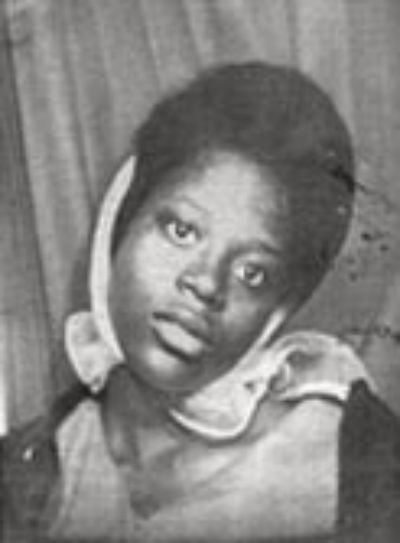
A 14-year-old student named Vivian Strong was killed on June 26, 1969 by an Omaha policeman named James Loder.
Responding to a reported break in of a unit at the Logan Fontenelle Housing Projects, Loder and his partner went inside to investigate.
Vivian’s sister, Carol, said in a 2009 interview that she and her sister were at a party at an empty unit in the projects. When the police showed up, Carol went to tell her sister they were there. Vivian was shocked, and fled through the back door. Carol went through the front.
Seeing a group of young people scatter and run out the back door, officer Loder drew his weapon. According to the youth, he was indiscriminate, not telling anyone to stop or freeze, or anything. Instead, he just fired his gun one time.
Vivian was shot at the base of the skull as she ran, and died immediately.
According to Buddy Hogan, a young man living in the area at the time, Loder’s partner that night was an African American patrolman named Jimmy Smith. Jimmy lived across the street from the Hilltop Housing Projects. Hogan writes that Smith tackled Loder and disarmed him after he killed Vivian.
Rioting Begins

This was the fourth summer of tension in the Near North Side neighborhood, and it was spreading up N. 24th quickly.
Soon after Vivian was killed, a crowd gathered along N. 24th, next to where the murder happened. By midnight, the crowd was so angry and focused that they started rioting. That night, two businesses owned by Jews were targeted; the next night a ten-block area was on fire.
Firefighters blasting the flames were accompanied by police riding on their trucks. In the following days, almost two dozen people were hospitalized after being attacked by the crowd. Rioting went on for three days.
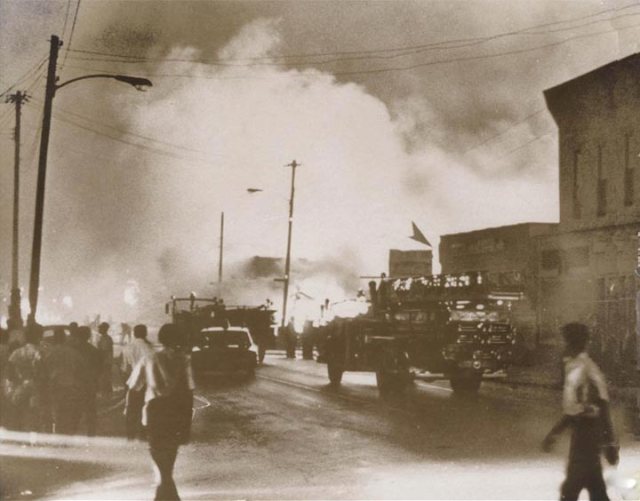
Police claimed “many of the acts of violence… including sniping incidents, a firebombing, and break-ins, were more deliberate. Officials postulated that ‘militants from other cities’ had come to Omaha to participate in the violence.” Crowd sizes were reported between 100 and 1,500 participants.
Within six months, Loder was acquitted of a manslaughter charge.
Protests and More Rioting
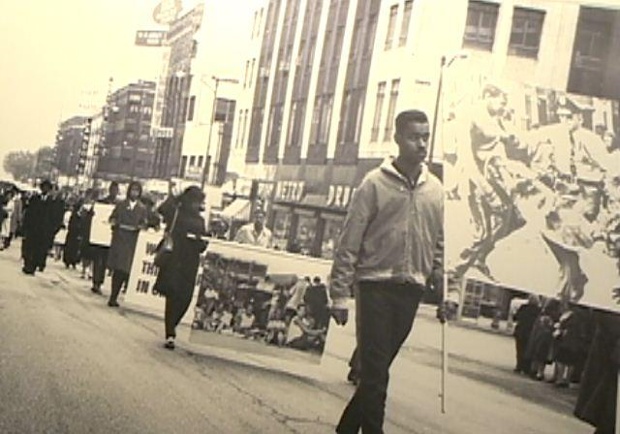
Despite what the riots looked like and what the local media reported, there was a big commitment to peaceful protests within Omaha’s Black community. African American youth in North Omaha organized their own picketing and marches, and felt some movement because of their commitment. The youth council for Omaha eventually secured additional money for positive after school, weekend and summer activities.
However, their efforts were usually eclipsed by violence.

When the verdict came out that Loder was not going to be indicted, riots flared back up. Smashing windows, looting merchandise and lighting fires along the way, the crowds moved the riot from 23rd to 24th Streets and from Clark to Lake Street. The rioting brought “21 arrests, 88 injuries, and $750,000 in property damage.” According to national media accounts, “vandalism and looting were reported by police in an area 55 blocks long and 24 blocks wide.” Black Panthers protected Black-owned businesses with armed guards, but their abilities were limited at best.
Shortly after, martial law called when the Nebraska National Guardsmen was called in. As the violence ended, the neighborhood watched buildings smolder for the next week.

In the blink of an eye, grocery stores, hardware stores, cleaners, gas stations, and cafes were completely gone. And never replaced.
Aftermath

Instead, the City of Omaha bulldozed block after block, and left the empty lots as reminders of the riots. There are still vacant lots along N. 24th Street today, and the area has never recovered its once-vibrant reality.
Omaha’s Black Panthers opened the Vivian Strong Liberation School for Children the summer she was killed. However, two leaders of that movement in Omaha, David Rice (today called Wopashitwe Mondo Eyen we Langa) and Ed Poindexter, were later indicted by the FBI for murdering an Omaha policeman. Soon after, Vivian’s uncle was implicatedof being guilt for the murder of the officer, but Omaha police and others have never pursued that lead. Police gave conflicting reports at their trial. That didn’t change anything though, and they were wrongly indicted.
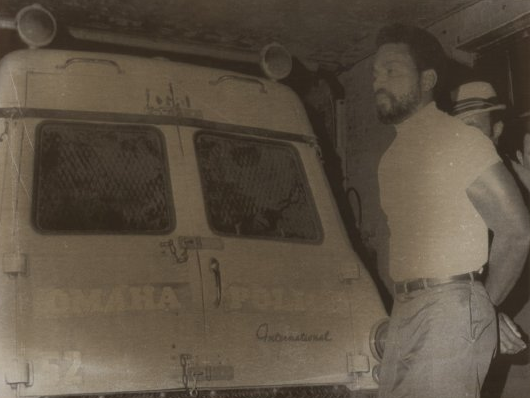

Mondo died in prison in 2016 after spending all these years in prison for a murder he didn’t commit. Ed Poindexter is still serving a sentence for the murder he didn’t commit, either.
Officer James Loder
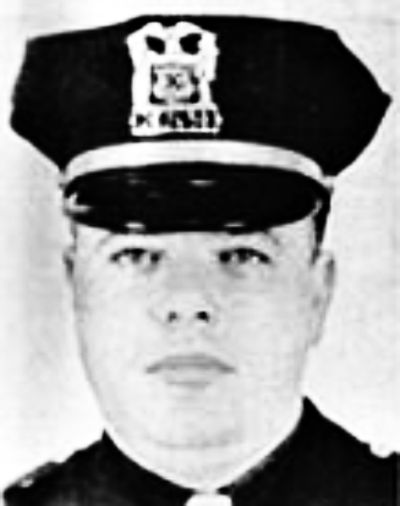
James Lamarr Loder (1939–) was the son of an actress who was famous in the 1930s and 40s, Hedy Lamarr (1914–2000). After serving in the Air Force for eight years, he joined the Omaha Police Department. He was 30-years-old when he killed Vivian, and he hadn’t been on the police force for long. Arrested for the murder, he was released on $500 bail and suspended from the police department for 15 days. In September 1969, he when to court against charges from the Douglas County prosecutor. Six months later, he was found innocent of all charges.

Incidentally, Loder was estranged from his mother for almost his whole life. She abandoned him as a child, and when confronted with his existence, suggested he was adopted. Hedy disowned him all of the rest of her life. He was denied an inheritance after she died. In 2001, an investigation recognized his genealogy. That year he was 61-years-old and working as a security guard on the riverboat casino in Council Bluffs. He had previously taken a small settlement to stay away from the inheritance, less than many non-family inheritors.
Today, James L. Loder apparently lives in Millard near the airport. There are no monuments or historic markers designating the site of the killing, riots or telling the story of the aftermath.
You Might Like…
- “Framed: J. Edgar Hoover, COINTELPRO and the Omaha Two Story” a series by Michael Richardson
- A History of Racism in Omaha
- A History of Redlining in Omaha
- A History of the North Omaha Riots
Elsewhere Online
- Original 1969 Associated Press video from the riots and their aftermath
- Leo Adam Biga’s blog
- The Case of Mondo we Langa (formerly known as David Rice) and Ed Poindexter
- Williams, Y. & Lazerow, J. (2008) Liberated Territory: Untold Local Perspectives on the Black Panther Party. Duke University Press
- Forss, A.H. (2014) Black Print with a White Carnation: Mildred Brown and the Omaha Star Newspaper, 1938-1989. University of Nebraska Press
- Stutzman, R. (October 30, 2000) “Court To Weigh Plea Of Lamarr’s Estranged Son” Orlando Sentinel
- Hoffman, B. (February 5, 2001) “Hedy News: Lamarr’s son not adopted“, New York Post
- “What Happened to Omaha’s Liberation School?” by Dawaune Hayes for NOISE
ADDITIONAL PICS
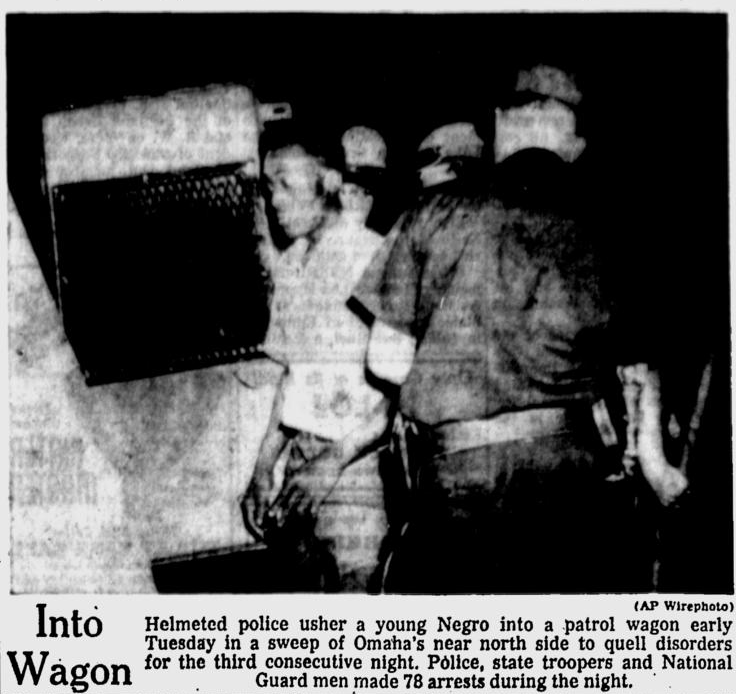
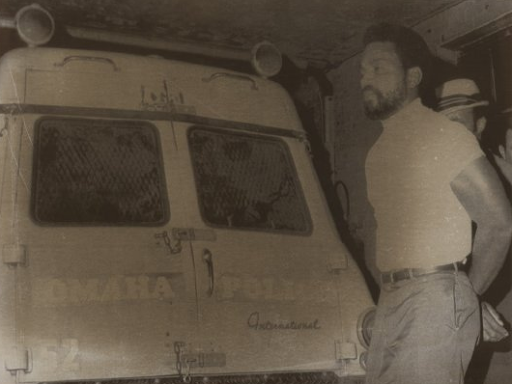
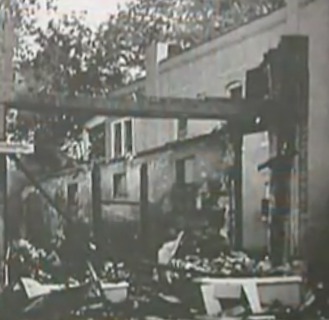



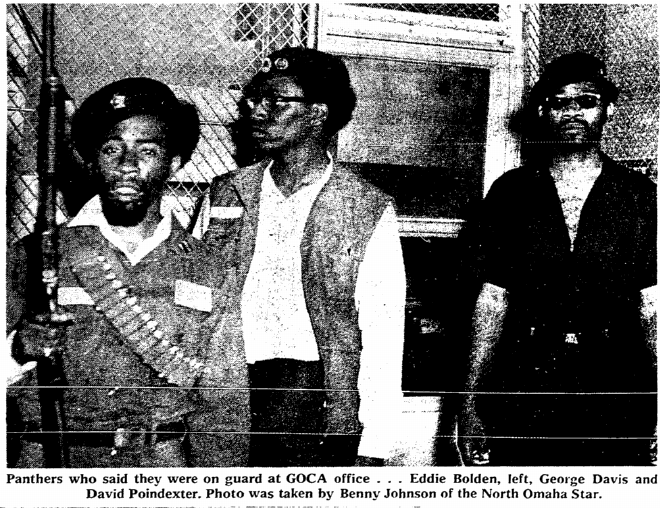
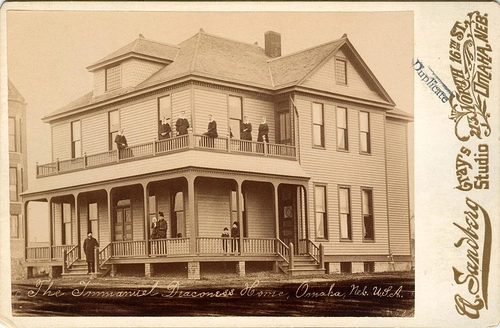

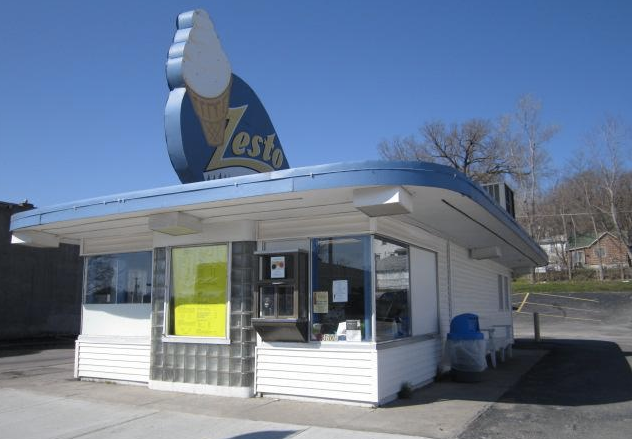
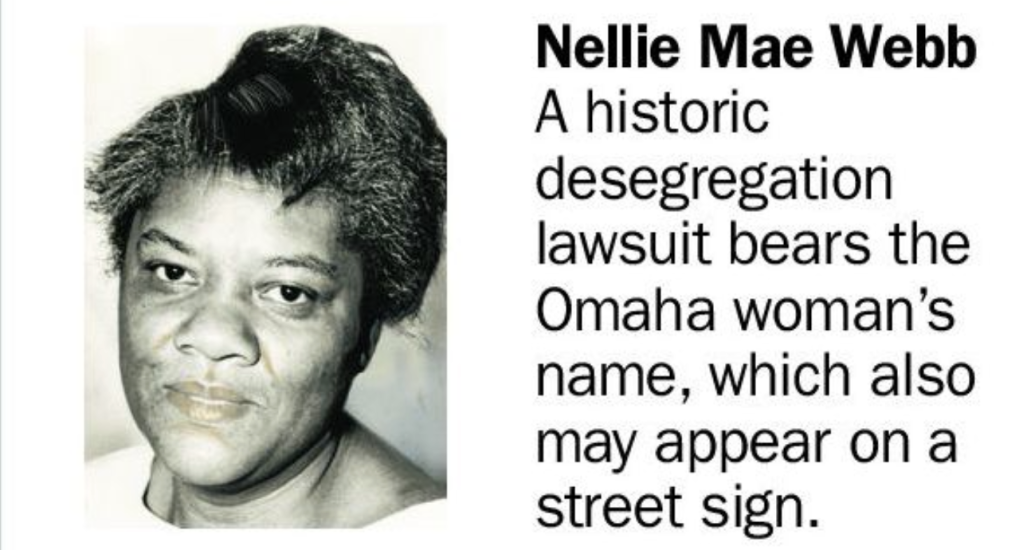
Leave a comment